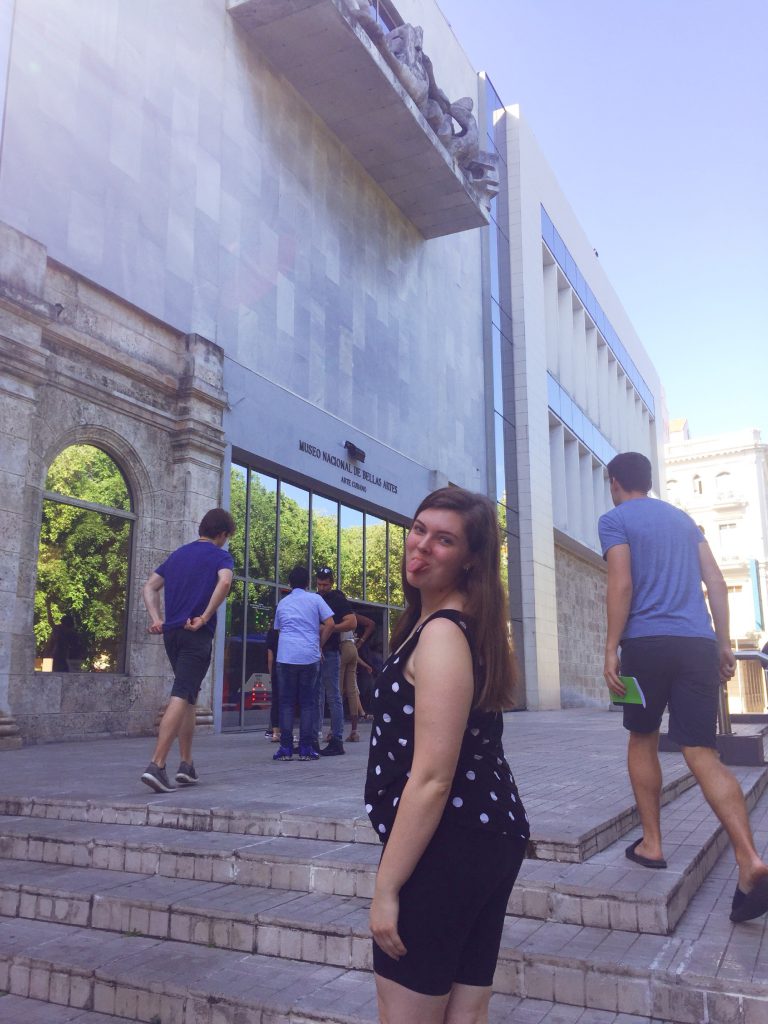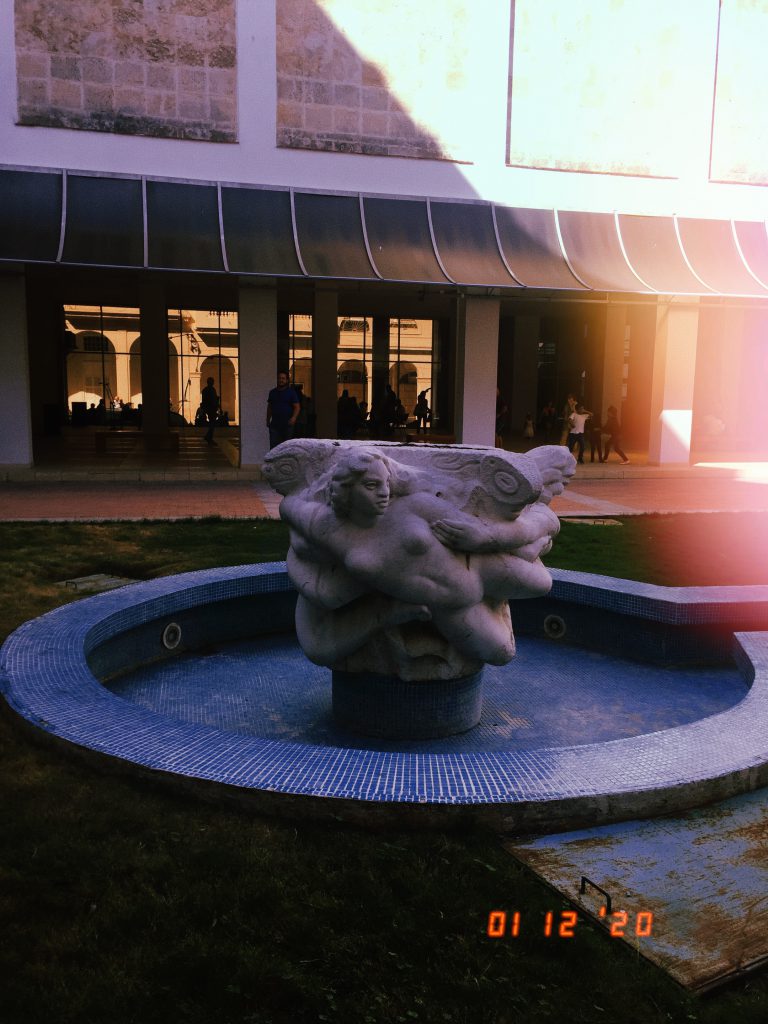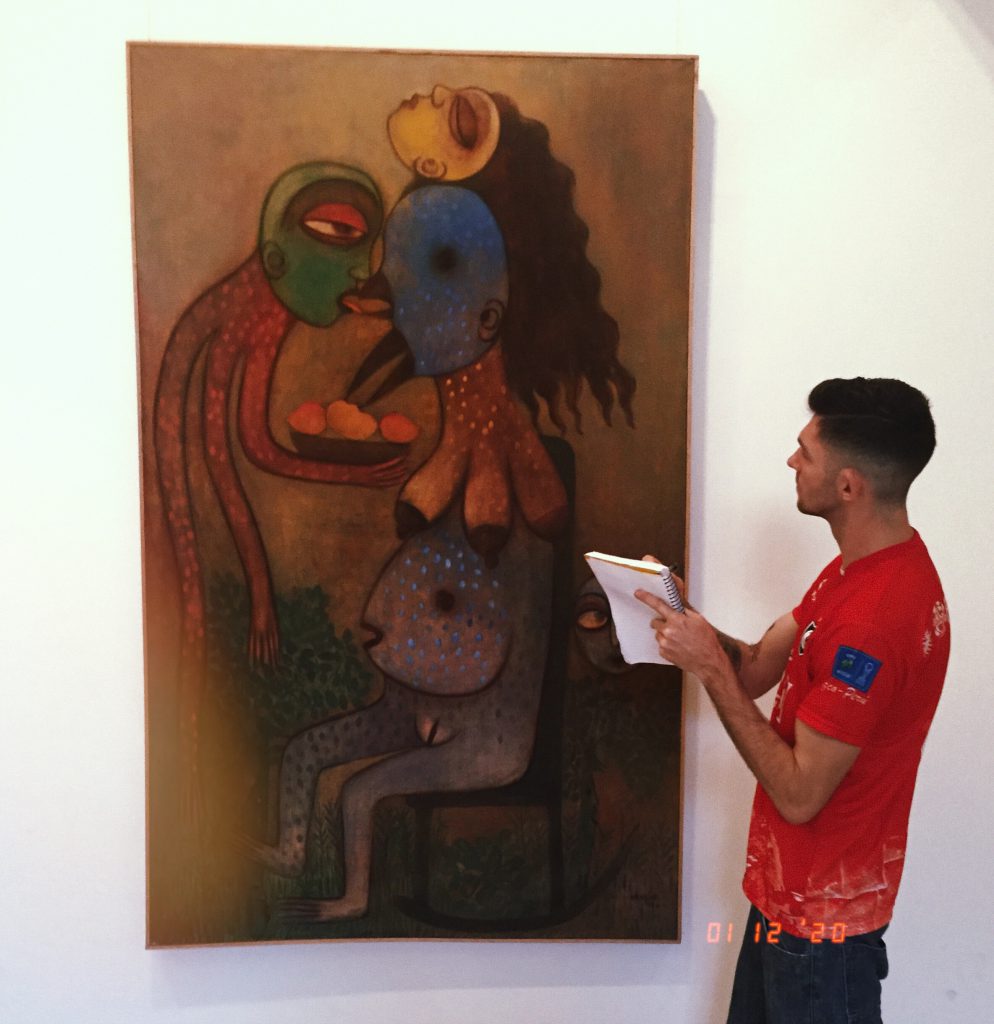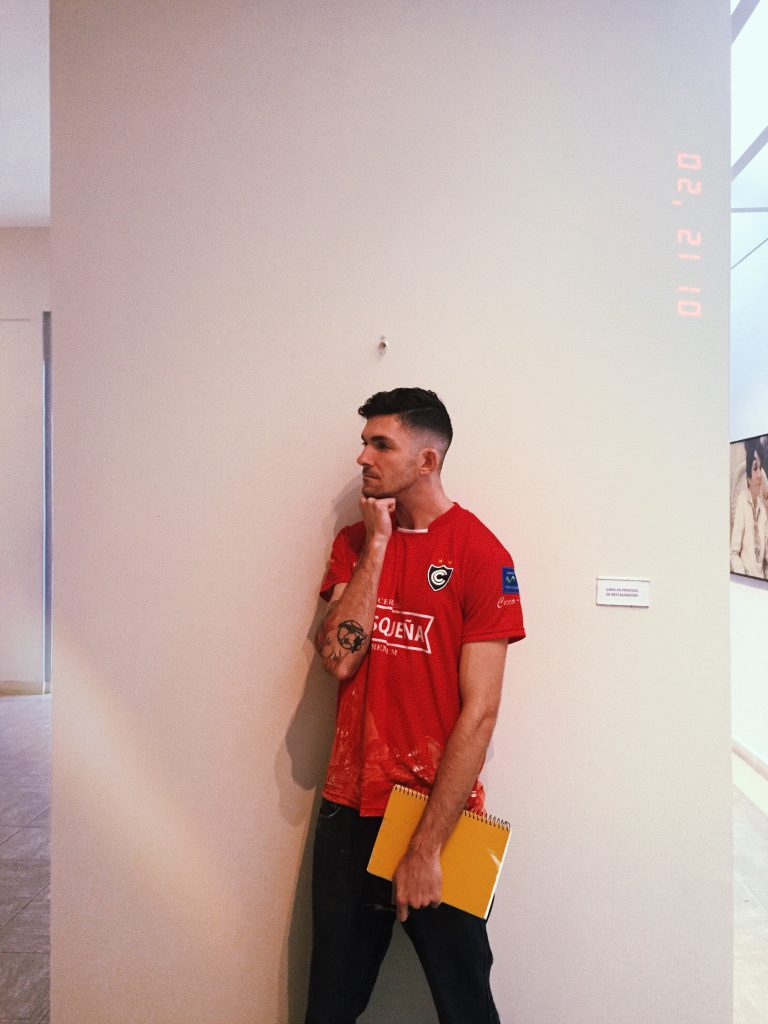¡Buenos días! I wouldn’t typically consider myself a morning person, but since it was my dedicated blog day, I was pumped and ready to go, notebook in hand. At 9:30am, we had a typical breakfast consisting of fresh watermelon juice, muffins, eggs, slices of guava, and (most importantly), a steaming pot of espresso to jumpstart our morning. At 10:30am, we departed for a visit to an art museum, el Museo Nacional de Bellas Artes. On the bus ride there, Elena launched headfirst into tourguide mode, explaining that the historic museum was over 100-years old and utilized a top-down approach of exhibits as follows: the third floor features 16th and 17th century religious artwork, the second floor features of 18th and 19th century contemporary works, and the first floor features larger installation pieces.


Despite being voted “Most Artistic” in high school, art museums have never really been my “thing.” However, this particular museum was a dime. I genuinely found myself getting lost in the artwork, each piece seeming to become more and more intricate as I wandered the various exhibits. Many were politically-charged and offered new insight and hidden messages at second glance. My favorite piece was “La Canción del Amor” by Pedro Alvarez Castello (pictured below). The more you look, the more hidden details and puzzle pieces you find. I was hooked; I initially walked away but found myself going back for a second, third, fourth look, until I decided to just sit on a bench and really dive deep into the artwork.

There is so much hidden symbolism in Castello’s piece, it was like peeling back layers of an onion to expose the core message. The figures possibly represent snippets of history, as the depth of field changes, signifying a timeline of sorts. On the left and “closest” to the viewer, Castello depicts a cheery image of two Coca Cola delivery men and a young boy, grins stretching their faces ear-to-ear. The depiction screams “1950s Americana,” almost to an excess, as if Castello is mocking American commercialism and materialism through caricature. This exaggerative nature continues throughout as a unifying theme. The second “closest” figural depiction shows two mid-20th century figures singing, with what appears to be a movie reel beside their feet. Lastly, the “farthest” scene depicts two black individuals dancing, instruments in hand. The way that I interpret these three scenes (along with the title translating to “The Song of Love”) is that Castello is criticizing the fact that industrialization and American commercialism has corrupted people’s core values as society becomes more and more materialistic and driven by financial gain.
One of the most significant symbols that you may not notice at first glance is that the entire scene is displayed as if on a stage, a red curtain drop framing the upper right corner and three spotlights lighting up the figures. As Rachel pointed out, “It’s like how Americans like to cover up and distort history,” or how the United States tends to diminish its economic impact on the Cuban way of life. Castello’s piece was particularly enrapturing, pulling the viewer in with its mystique and hidden messages.
Once I felt I had analyzed his piece enough, I managed to catch up with the group and spend the rest of my museum trip leisurely browsing many of the other exhibits. One of the more (dare I say) “interesting” pieces was a 1986 untitled piece by Manuel Mendive (pictured below). After staring intently at the painting with Scott, we both could not make heads nor tails of the three-breasted, double-beaked, fish-bellied beast locking tongues with the three-limbed, green-headed creature. As a self-proclaimed observant art surveyor, I noticed the most important detail: beast #1 stepping on a two-headed peapod about to suck its toes, which prompted Scott to utter the iconic quote, “Lemme suck dem toes.”


The museum visit was a welcome change in scenery, providing a relaxed and thought-provoking morning. Just like it can be said about American artwork, there is something about Cuban art that makes it so distinctly Cuban that is hard to pinpoint. Perhaps it’s the strong themes of national pride, the rich use of color, or the cultural and historical allusions threaded throughout each piece. It was such a privilege to view and analyze first-hand the fine art pieces that represent and define Cuban culture. El Museo Nacional de Bellas Artes was certainly one heck of a spot to check off my Cuban bucket list and I’ll be forever grateful to have visited.

